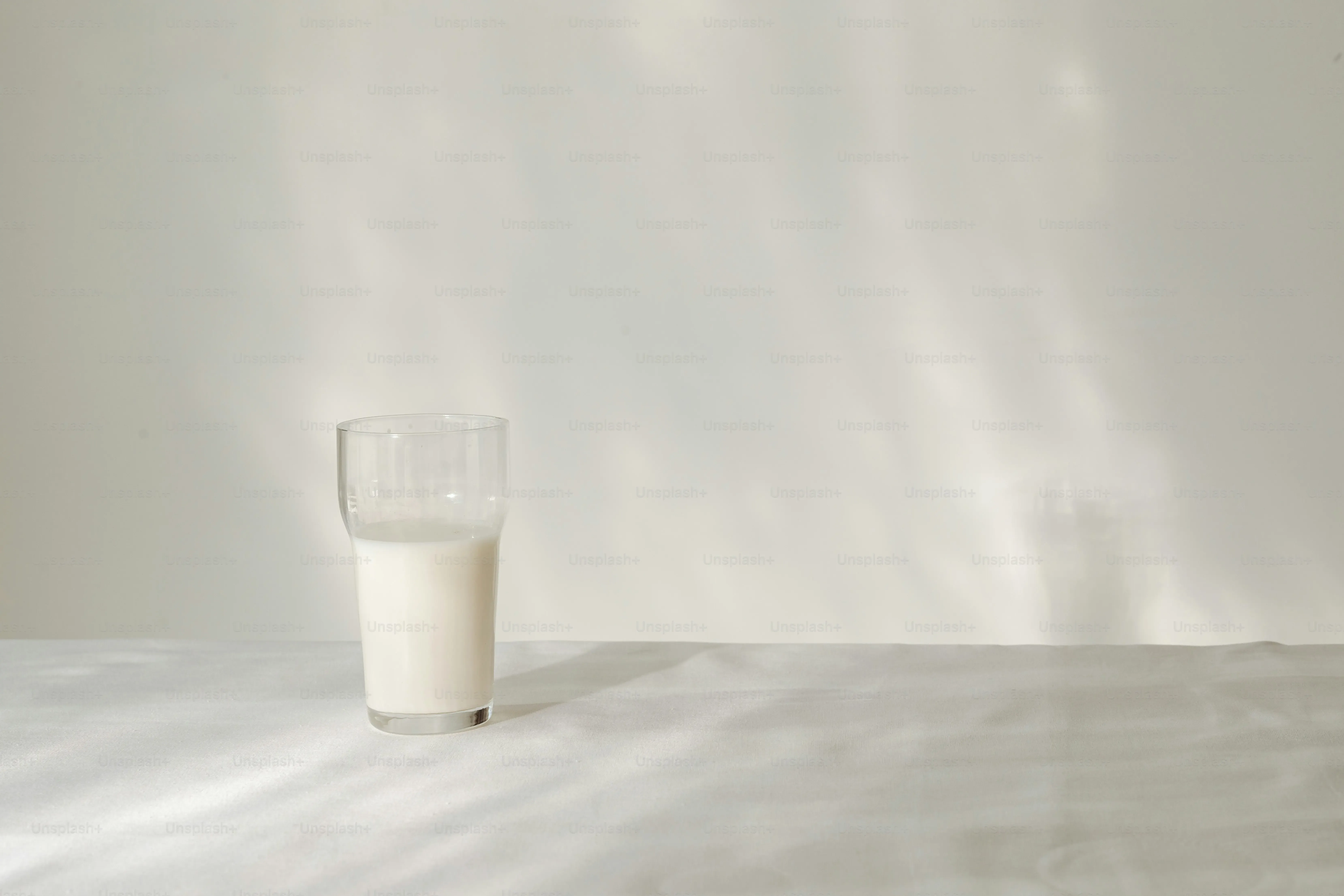Table of Contents
Walk into any grocery store these days, and the dairy aisle isn't just about dairy anymore. It's a crowded field of choices. For years, low fat milk was the go-to for many looking to cut back on saturated fat while still getting calcium and protein. Now, plant-based options like oat milk have exploded in popularity. This leaves a lot of people scratching their heads, wondering which carton to grab. Is one inherently "better" than the other? When you're looking at your daily intake, the question often boils down to the numbers, specifically, theoat milk vs low fat milk calories. But focusing only on calories tells just part of the story. We need to look beyond that single number to understand what each drink brings to the table in terms of protein, fats, sugars, and essential vitamins. Let's break down the nutritional facts without the marketing hype so you can figure out which milk alternative, or traditional milk, fits best into your diet and lifestyle. We'll dive into the calorie count, sure, but also unpack the rest of the nutritional label to give you a clearer picture.
Comparing Oat Milk vs Low Fat Milk Calories HeadtoHead

Comparing Oat Milk vs Low Fat Milk Calories HeadtoHead
The Raw Numbers: What Labels Show
Alright, let's get straight to the calorie count, because that's often the first thing people eye on the carton. When you line up a standard 8-ounce serving of low fat cow's milk next to a similar serving of plain, unsweetened oat milk, the numbers are often surprisingly close. Low fat milk, typically 1% or 2%, usually clocks in somewhere between 100 and 120 calories. Unsweetened oat milk? You're often looking at a similar range, maybe slightly higher, landing between 100 and 130 calories depending on the brand and how it's made. So, if you thought switching to oat milk was some magic calorie-cutting bullet, think again. The difference isn't as dramatic as marketing might suggest.
Why the Numbers Aren't Identical Across Brands
But here's where it gets a little murky. Those calorie figures for oat milk aren't set in stone. The calorie content can swing based on a few things. Is it a barista blend designed for frothing? Those often have a bit more fat for texture, pushing the calories up. Does it have added sugars or flavorings? Vanilla or chocolate versions will definitely add calories from sweeteners. Low fat milk is a bit more consistent because regulations define what "low fat" means, keeping the calorie range tighter. Oat milk, lacking that standard definition across the board, shows more variation from one container to the next.
Let's look at some typical figures:
Beverage (8 oz) | Typical Calorie Range |
|---|---|
Low Fat Milk (1% or 2%) | 100-120 |
Unsweetened Plain Oat Milk | 100-130 |
Sweetened/Flavored Oat Milk | 130-160+ |
Putting Calories in Perspective
So, whileComparing Oat Milk vs Low Fat Milk Calories Head-to-Headon paper shows them often being in the same ballpark, that single number doesn't tell you everything about how it fits into your diet. A few extra calories here or there might not matter much in the grand scheme of a balanced day, but understanding *why* the calories differ – whether it's from natural sugars, added sugars, or fats – is crucial. It's less about declaring a winner based solely on calories and more about understanding the source of those calories and the other nutrients they come with.
Protein, Fat, and Carbs: More Than Just Calories

Protein, Fat, and Carbs: More Than Just Calories
Protein: The Building Blocks
Stepping beyond the calorie count, let's talk about protein. This is where low fat cow's milk often pulls ahead significantly. An 8-ounce glass of low fat milk typically provides around 8 grams of protein. That's a solid amount, useful for muscle repair, feeling full, and all the other jobs protein does in your body. Now, look at most unsweetened oat milks. They usually contain only 1 to 3 grams of protein per serving. That's a pretty stark difference. If you rely on your milk for a protein boost, especially first thing in the morning or after a workout, swapping dairy for oat milk without adjusting elsewhere means you're likely missing out.
Fat and Carbs: Fuel and Texture
When it comes to fat, low fat milk, as the name suggests, keeps it low – usually 0.5 to 2.5 grams per 8 ounces, depending on whether it's skim, 1%, or 2%. Unsweetened oat milk often has a similar fat content, sometimes slightly higher to give it that creamy mouthfeel people like. Carbs are a different story. Oat milk starts with oats, which are primarily carbohydrates. So, even unsweetened versions tend to have more carbs than low fat dairy milk, often ranging from 15 to 20 grams per serving compared to dairy's roughly 12 grams (mostly from natural lactose sugar). This is part of why oat milk can feel thicker; it's got more dissolved oat solids, which are essentially carbs.
Here's a quick look at the typical macronutrient breakdown:
Beverage (8 oz) | Protein (g) | Fat (g) | Carbohydrates (g) |
|---|---|---|---|
Low Fat Milk (1% or 2%) | ~8 | 0.5-2.5 | ~12 |
Unsweetened Plain Oat Milk | 1-3 | 1-2.5 | 15-20 |
The Sugar Factor: Added Sweeteners in Oat Milk vs Low Fat Milk

The Sugar Factor: Added Sweeteners in Oat Milk vs Low Fat Milk
Natural vs. Added Sweetness: A Key Difference
let's talk sugar, because this is where things can get really tricky, especially when comparingThe Sugar Factor: Added Sweeteners in Oat Milk vs Low Fat Milk. Low fat cow's milk contains natural sugar in the form of lactose. It's just part of the package. An 8-ounce serving typically has around 12 grams of total sugar, all of it lactose. Oat milk, on the other hand, has its own natural sugars that develop during processing when enzymes break down the oats' starches. This is why even unsweetened oat milk tastes slightly sweet. However, the real kicker comes with *added* sugars. Many oat milk varieties on the market, especially flavored ones or those not explicitly labeled "unsweetened," have extra sweeteners dumped in to make them more palatable to the masses. This dramatically increases the total sugar content and, consequently, the calories.
Decoding Labels for Hidden Sugar
This is why you absolutely *must* read the nutrition label on your oat milk carton. Don't just grab the first one you see. Look at the "Added Sugars" line under Total Sugars. While low fat dairy milk will show 0 grams of added sugar (because lactose isn't added), many oat milks can have anywhere from 5 to 10 grams or even more of added sugar per serving. That adds up quickly. Think of it like drinking a slightly sweetened soda with your meal. If you're trying to reduce your intake of added sugars, which most health guidelines recommend, then an unsweetened oat milk is your only real option in that category. Low fat milk simply doesn't pose this particular problem.
Beverage (8 oz) | Total Sugar (g) | Added Sugar (g) |
|---|---|---|
Low Fat Milk (1% or 2%) | ~12 (all lactose) | 0 |
Unsweetened Plain Oat Milk | ~5-10 (natural from oats) | 0 |
Sweetened Plain Oat Milk | ~10-18+ (natural + added) | 5-10+ |
Essential Nutrients: What Dairy and Oat Milks Offer

Essential Nutrients: What Dairy and Oat Milks Offer
Beyond the Basics: Vitamins and Minerals
so we've dissected the big three: calories, protein, and carbs/fat. Now, let's talk about the micronutrients – the vitamins and minerals that actually do the heavy lifting for your health. This is where low fat dairy milk traditionally shines. It's a natural source of calcium, crucial for bone health; vitamin D (often added, but standard practice); phosphorus, another bone-building block; riboflavin (Vitamin B2); and vitamin B12, which is vital for nerve function and metabolism. Oat milk, on its own, doesn't naturally contain significant amounts of most of these. The oat grain has some nutrients, sure, but not in the quantities found in dairy milk. Therefore, to make oat milk nutritionally competitive, manufacturers *fortify* it. They add synthetic versions of calcium, vitamin D, B12, and sometimes others like vitamin A. The level of fortification can vary widely by brand, so relying solely on oat milk for these nutrients means you need to check the label religiously to ensure you're getting enough. It's the difference between a nutrient being inherently present and being added in a lab.
Making Your Choice: Weighing Oat Milk vs Low Fat Milk Calories and Nutrition Needs

Making Your Choice: Weighing Oat Milk vs Low Fat Milk Calories and Nutrition Needs
Aligning Milk Choice with Dietary Goals
Alright, so you've seen the numbers.Making Your Choice: Weighing Oat Milk vs Low Fat Milk Calories and Nutrition Needsisn't just about picking the lowest calorie option. It's about what else you need from your drink. If protein is a priority – say, you're hitting the gym regularly or just trying to feel full longer – low fat dairy milk offers a clear advantage with its 8 grams per serving compared to oat milk's measly 1-3 grams. Swapping out dairy milk for oat milk in your morning smoothie or with your cereal means you're starting your day with significantly less protein, which might leave you rummaging for snacks sooner. On the flip side, if you have lactose intolerance or follow a strict vegan diet, dairy milk is off the table regardless of its protein content or calorie count.
Considering Specific Nutritional Requirements and Restrictions
Beyond protein and dietary restrictions, think about micronutrients. Are you actively trying to ensure you get enough calcium and vitamin D for bone health? While fortified oat milk *can* provide these, the consistency and amount can vary. Dairy milk provides these reliably and often in higher quantities naturally or through standard fortification practices. For those managing blood sugar, the higher carbohydrate content in oat milk, even unsweetened, might be a consideration compared to the lower carb profile of dairy milk (where the carbs are primarily lactose). Also, remember the added sugar trap in many oat milk varieties; if you're cutting down on added sugars, you *must* opt for unsweetened versions, which still contain natural sugars from the oats.
When deciding, ask yourself:
- Do I need the higher protein content of dairy milk?
- Do I have lactose intolerance or follow a vegan diet?
- How important are naturally occurring calcium and vitamin D to me?
- Am I concerned about added sugars?
- How does the total carbohydrate load fit into my diet?
Picking Your Pour: It's Not Just About the Calories
So, we've looked under the hood atoat milk vs low fat milk caloriesand the rest of the nutritional facts. Low fat milk often packs more protein and calcium naturally, while some fortified oat milks can come close in certain vitamins. Oat milk usually has more carbs and can have added sugars, depending on the brand, though it offers fiber and beta-glucans. Low fat milk, being dairy, has lactose (a natural sugar) but no added sugar in its plain form. Ultimately, there's no single winner in this dairy aisle showdown. Your best bet depends on what you need: are you prioritizing protein, avoiding lactose, managing blood sugar, or simply prefer the taste? Read the labels, consider your dietary goals, and choose the one that aligns best with what you're trying to achieve. Don't let marketing or calorie counts alone dictate your decision.
